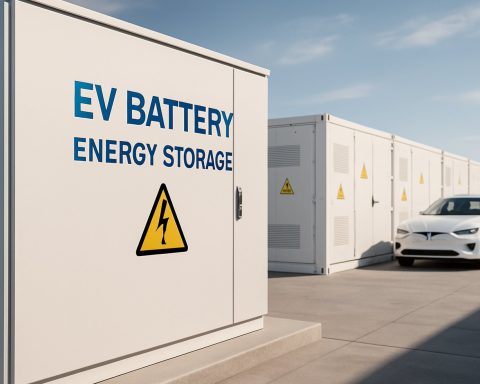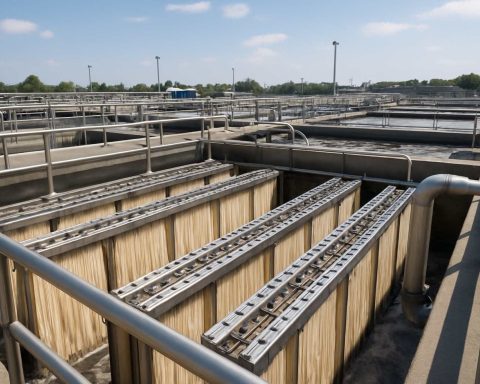Italy is on the brink of a significant energy transformation. Prime Minister Giorgia Meloni’s administration is laying the groundwork for a potential return to nuclear energy, aiming to create a legal framework by the close of 2027, as reported by local media outlets.
Energy Minister Gilberto Pichetto Fratin articulated the government’s vision, emphasizing that nuclear energy will serve as a complement to existing renewable sources. This approach is designed to achieve a well-rounded and sustainable energy strategy for the nation. Minister Fratin revealed that an initial draft of the proposed legislation is in the works and will soon be presented for cabinet approval.
Historically, Italy’s venture into nuclear power came to an end following the Chernobyl incident, with all nuclear facilities being decommissioned after a referendum in 1990. Attempts to revitalize this sector were halted post-Fukushima in 2011, leading to years of discussion without action.
However, since assuming office in late 2022, Meloni’s government has reignited interest in nuclear energy, particularly eyeing advancements in small modular and fusion reactors. Nevertheless, specific details regarding the implementation of this ambitious plan are yet to be clarified.
Critics, including opposition leaders and environmental advocates, have voiced strong dissent against this energy strategy, raising concerns about safety and ecological impact. The future of Italy’s energy landscape remains uncertain as these discussions unfold.
The Broader Implications of Italy’s Energy Transformation
Italy’s renewed interest in nuclear energy could have profound societal and economic ramifications. As the nation aims to balance its energy portfolio, the integration of nuclear power could stabilize energy prices amid rising global volatility. In the face of Europe’s precarious energy landscape, marked by dependency on external sources and fluctuating fossil fuel prices, Italy’s strategy may act as a linchpin in the quest for energy independence. This shift could also stimulate job creation in nuclear technology sectors, fostering innovation and drawing investment into the country.
Culturally, the acceptance of nuclear power could signal a pivot in public sentiment surrounding energy production. The echoes of historical accidents like Chernobyl and Fukushima still resonate in the Italian psyche, making public education and transparency critical components of any future nuclear initiative. Without effective communication, the legacy of opposition may persist, leading to social tension over energy policy decisions.
Environmentally, the debate surrounding nuclear energy’s role in carbon reduction is complex. Though nuclear power is a low-carbon energy source, concerns about waste management and ecological safety remain significant. The potential shift towards nuclear, especially with advancements in small modular and fusion reactors, suggests a future trend of cleaner energy that could reshape Italy’s carbon footprint.
In the long run, the implications of this energy renaissance will extend beyond national borders, influencing global conversations about sustainable energy and climate resilience—highlighting the intricate dance between technological advancement, public perception, and environmental stewardship in the fight against climate change.
Italy’s Nuclear Energy Renaissance: A Leap Towards Sustainable Power?
Overview of Italy’s Energy Transformation
Italy is poised to undergo a significant transformation in its energy policy, with a potential revival of nuclear energy on the horizon. Under the leadership of Prime Minister Giorgia Meloni, the Italian government is actively working to establish a legal framework that could pave the way for nuclear energy by the end of 2027. This initiative represents a shift in Italy’s approach to energy production, as the nation seeks to balance renewable resources with nuclear power.
Key Features of the New Energy Strategy
– Complementary Role of Nuclear Energy: Energy Minister Gilberto Pichetto Fratin has emphasized that nuclear energy will not replace renewable sources but will work alongside them. This integrated approach aims to enhance Italy’s energy security and minimize reliance on fossil fuels.
– Legislative Process: An initial draft of the proposed nuclear legislation is already in development, with plans to submit it for cabinet approval soon. This indicates a structured and serious commitment from the government to reintroduce nuclear power.
– Focus on Modern Technologies: The current administration is particularly interested in modern advancements in nuclear technology, such as small modular reactors (SMRs) and potential future applications of fusion energy. These innovations could address past concerns regarding safety and sustainability.
Historical Context
Italy’s relationship with nuclear energy has been turbulent. Following the Chernobyl disaster in the 1980s, public sentiment turned against nuclear power, culminating in a 1990 referendum that led to the decommissioning of all nuclear plants. Subsequent attempts to revisit nuclear energy, particularly after the Fukushima disaster in 2011, stagnated under growing safety concerns and public opposition.
Pros and Cons of Nuclear Energy in Italy
Pros:
1. Reduced Carbon Emissions: Nuclear power provides a low carbon alternative to fossil fuels, which could help Italy meet its climate goals.
2. Energy Security: A diversified energy portfolio with nuclear energy may enhance national energy security.
3. Technological Advancements: Modern nuclear technologies promise improved efficiency and safety compared to older systems.
Cons:
1. Public Opposition: Significant resistance exists from the public and various advocacy groups, primarily due to safety concerns.
2. Waste Management Challenges: Long-term disposal and management of nuclear waste remain unresolved issues.
3. High Initial Costs: The financial burden of establishing new nuclear plants can be substantial, raising concerns about economic viability.
Current Market Analysis and Trends
The global energy market is experiencing a shift as nations explore sustainable energy sources to combat climate change. Italy’s reconsideration of nuclear power aligns with this trend, suggesting a broader European resurgence of interest in nuclear energy amidst rising energy prices and geopolitical uncertainties. As other countries invest in nuclear technologies, Italy’s potential step forward could influence the continent’s energy policies.
Insights and Predictions
Experts suggest that nuclear energy, paired with advancements in renewable technologies, could potentially lead to a substantial reduction in Italy’s greenhouse gas emissions. However, the success of this initiative largely depends on overcoming public skepticism and establishing a robust safety and waste management framework.
Conclusion
Italy stands at a crossroads in its energy policy, rekindling the debate over nuclear power as a viable part of its future energy landscape. While the promise of a sustainable and secure energy grid shines brightly, the path to implementation will require navigational skills through political, social, and technological challenges. The coming years will be crucial in defining Italy’s energy future as discussions and decisions unfold.
For more information on Italy’s energy policies and developments, visit the official government site at governo.it.











